With climate change increasing the likelihood of extreme weather events in the UK, gardeners need to consider how to adapt to the changing conditions. Perhaps the biggest issue for many of us is drought. How will our gardens react to the increasingly dry weather?
We don't know exactly what will happen over the coming years and decades, but it's likely that our gardens will be getting less water, particularly in the summer months, with temporary hosepipe bands becoming the norm. It's therefore more and more important that we know how to water our gardens efficiently, i.e. when to water and how often to water.
It's worth considering ways to reduce the amount of mains water we use in our gardens, too – installing water butts, redirecting gutters and using domestic wastewater are a great start.
Climate change will also have an impact on the plants that we can grow, so it's a good time to start incorporating drought-tolerate plants and drought-resistant plants into our gardens that can cope well with low moisture levels.
Discover more great garden ideas with our guides to easy garden projects, caring for houseplants, and creating a wildlife-friendly garden.
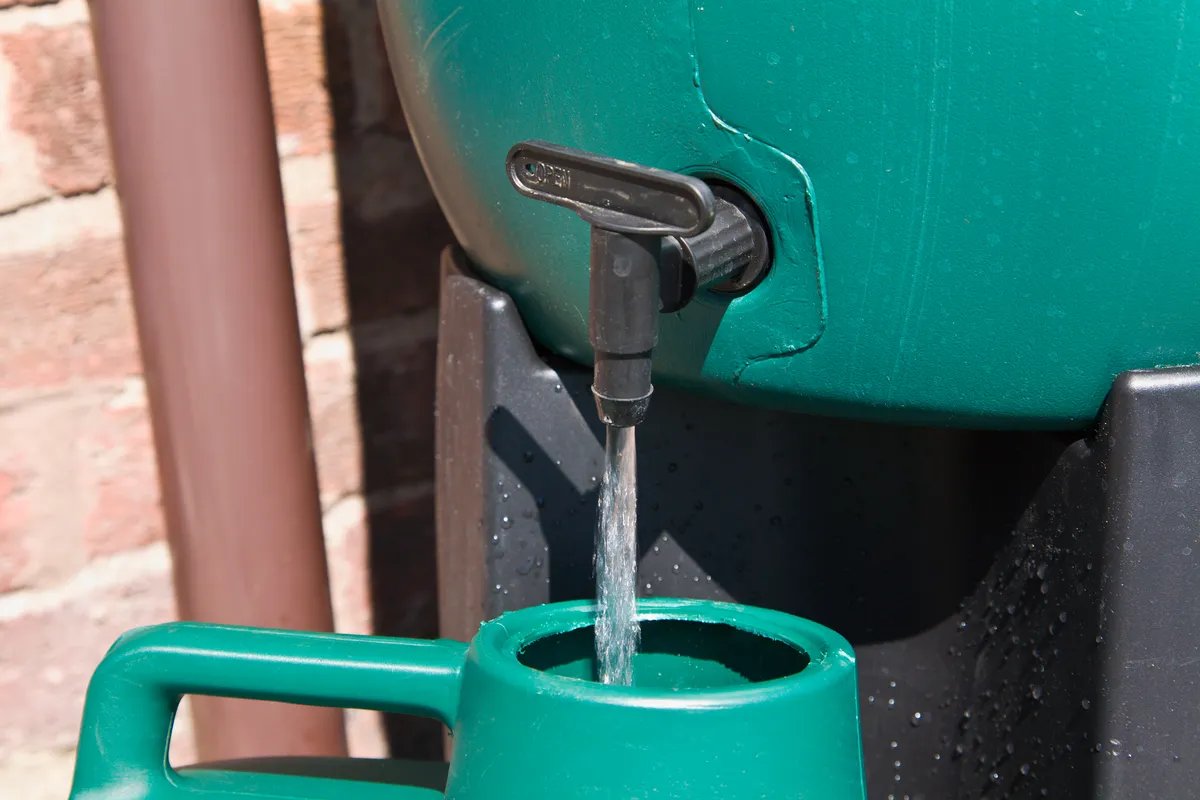
When is the best time to water my garden?
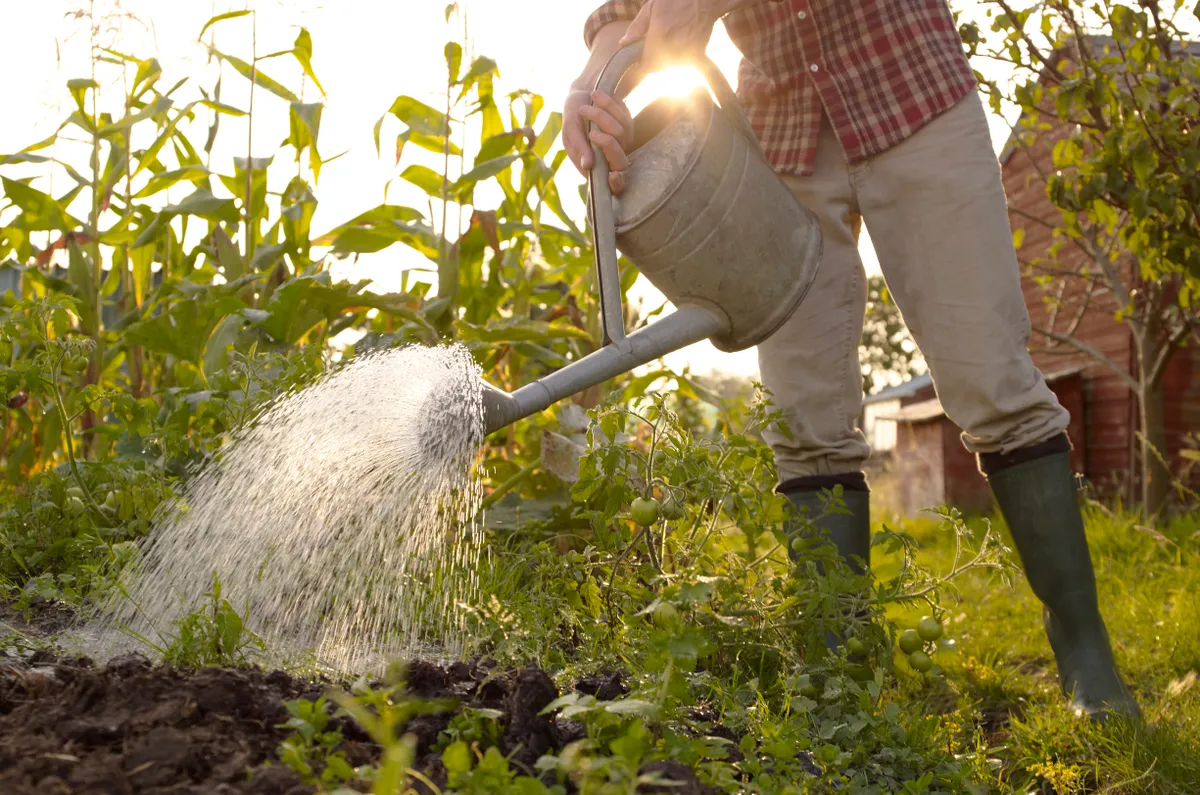
It’s always best to water your garden when the day is cool, ideally early in the morning before the sun comes up. If you water your garden in the midday heat, most of the water will evaporate before getting to the roots of the plant.
- Find out more about when to water your garden in hot weather.
How often should I water my garden?
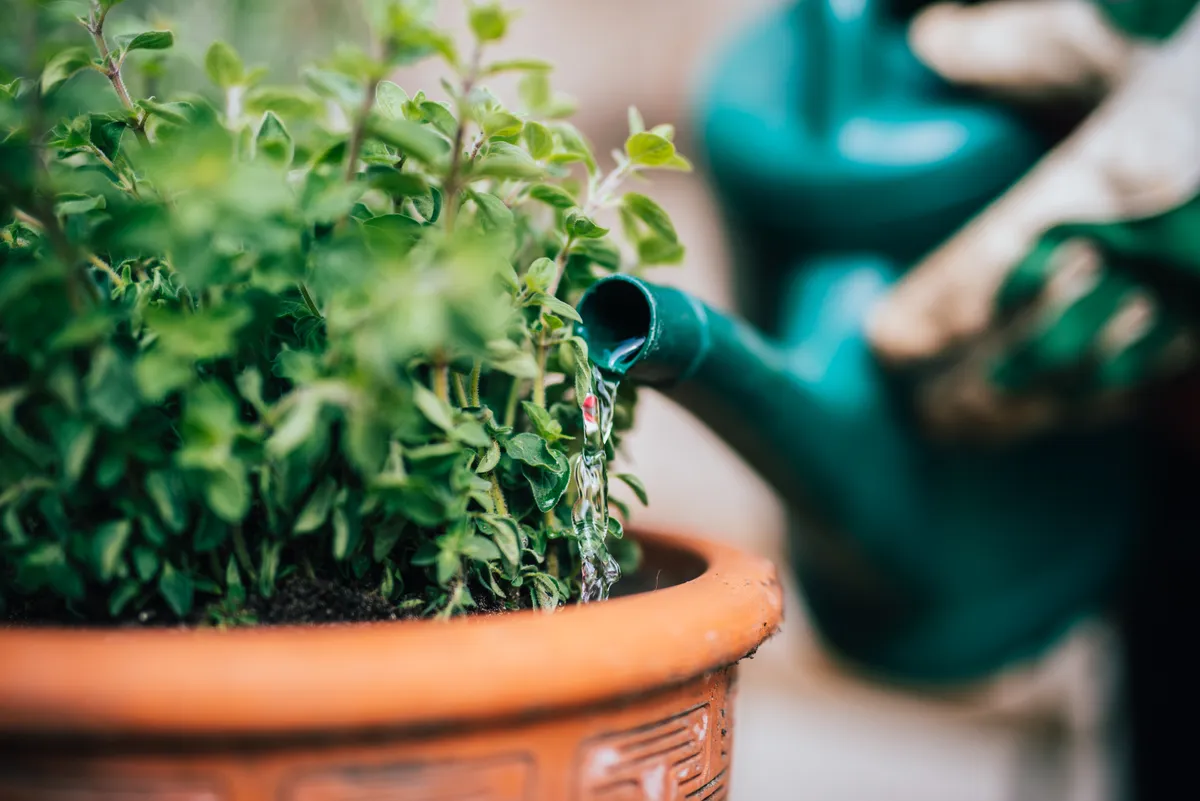
There is no straight answer to this question, but as a general rule of thumb, plants in containers will need more regular watering, perhaps daily in the summer months, while large shrubs and trees in the ground may only need to be watered periodically. If water is tight, it’s better to water well less frequently than it is to water little and often.
More gardening content
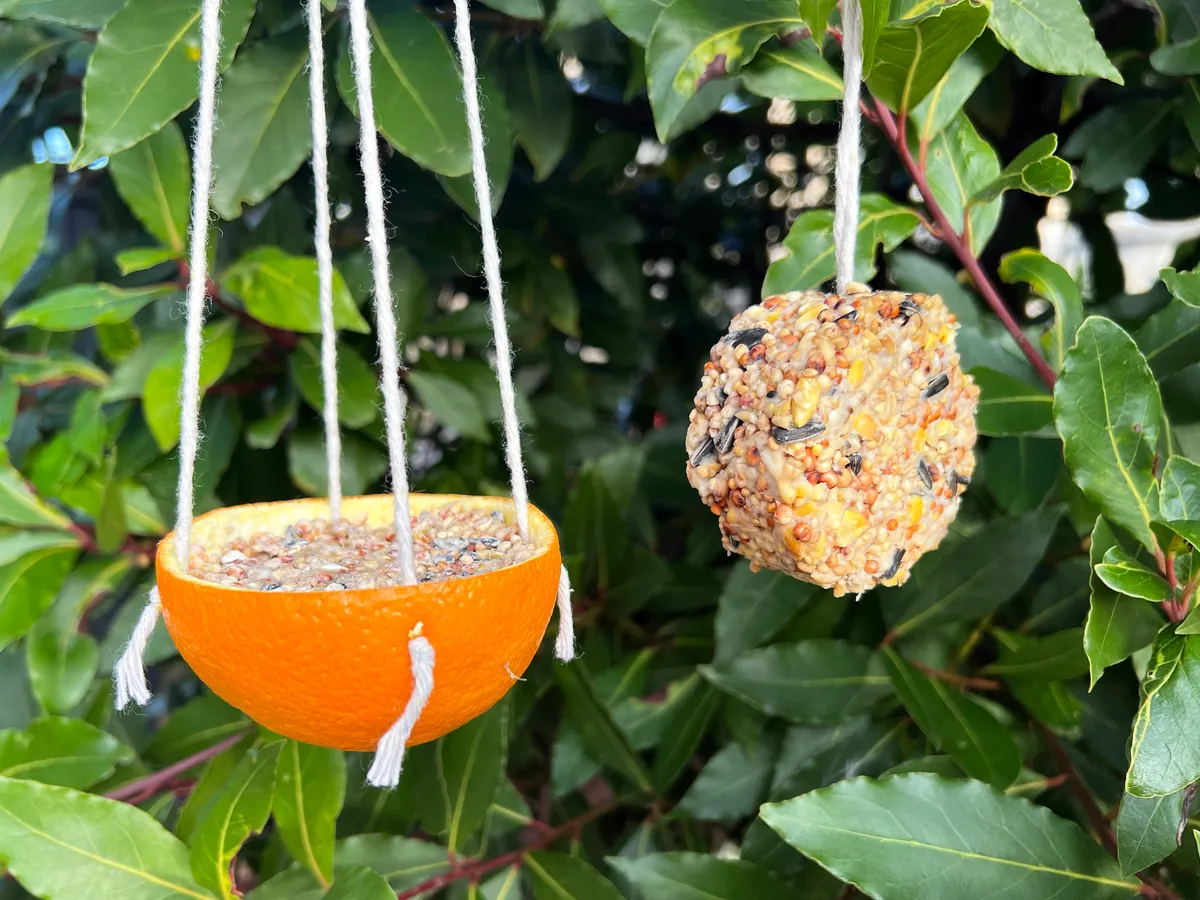
Where to water plants in dry weather
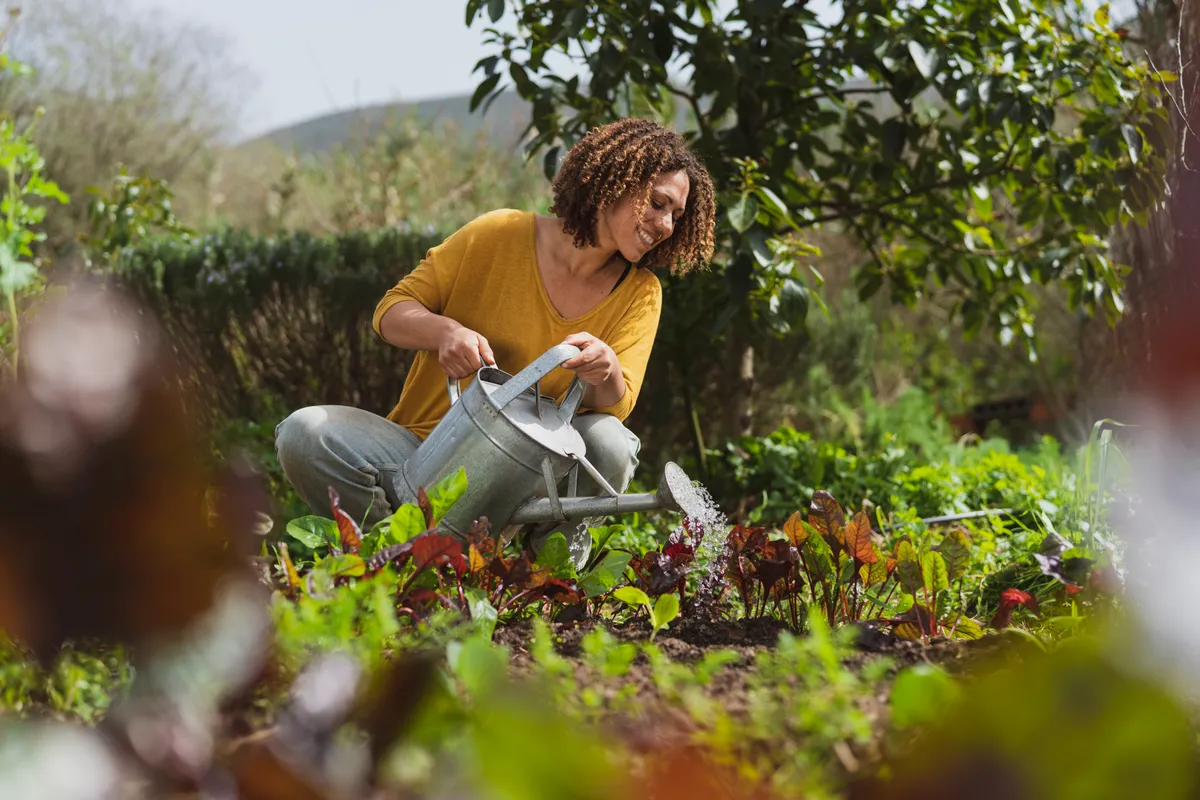
It’s best to focus your watering at the base of the plant, shrub or tree, above the roots. This means the water reaches the roots as quickly and directly as possible. You should try and avoid spraying the garden from above; water that lands on leaves quickly evaporates in warm weather.
How to make a slow-drip irrigation system from a bottle
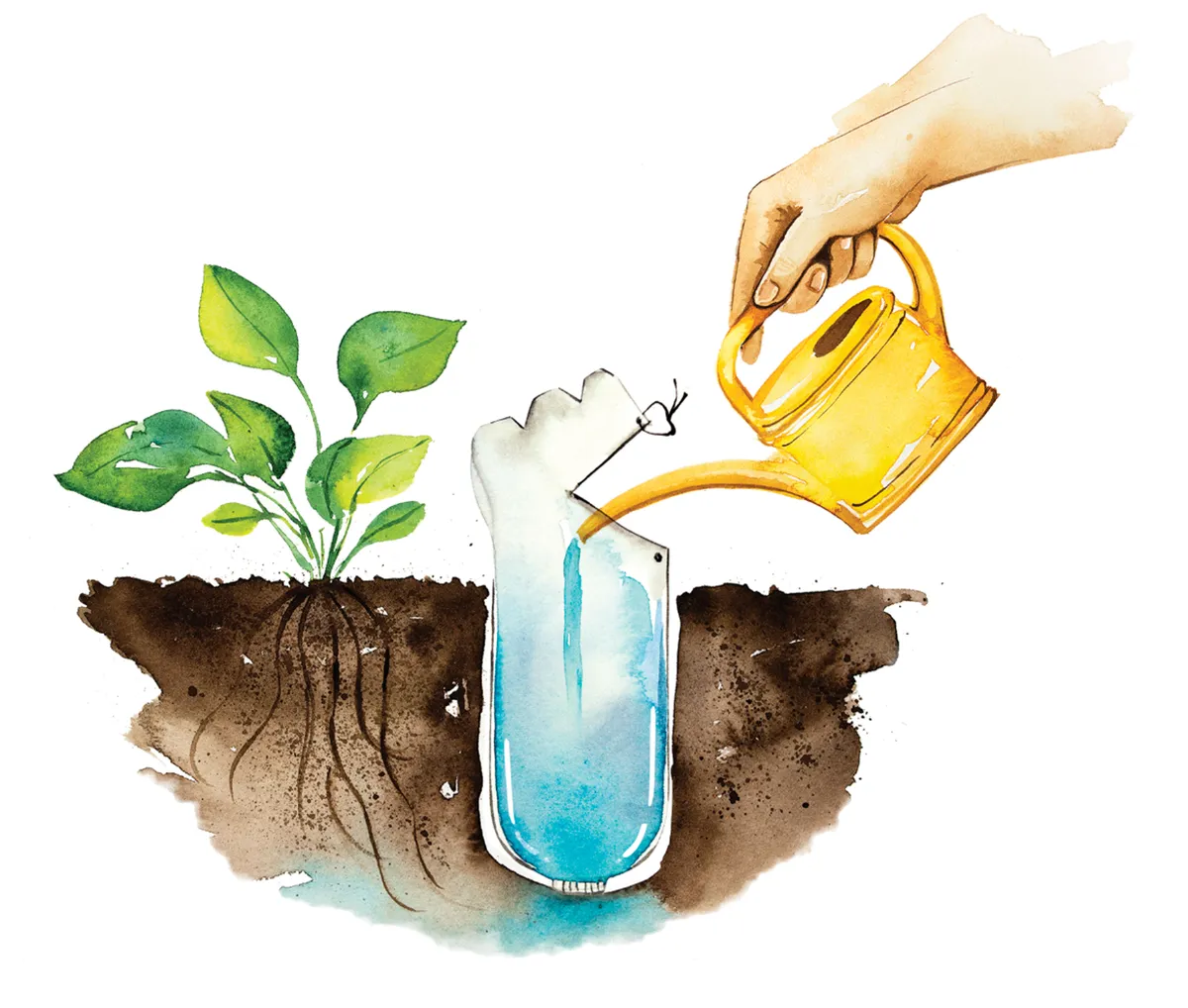
It’s possible – and easy – to make your own slow-release irrigation system that delivers liquid straight to the roots of a plant over the course of several hours, keeping it moist while reducing water loss through evaporation.
Our easy-to-make water-bottle irrigation system can be created from old water bottles, and is a fun activity to do with the family.
- Discover more easy garden projects
How to collect water in the garden
Install a water butt
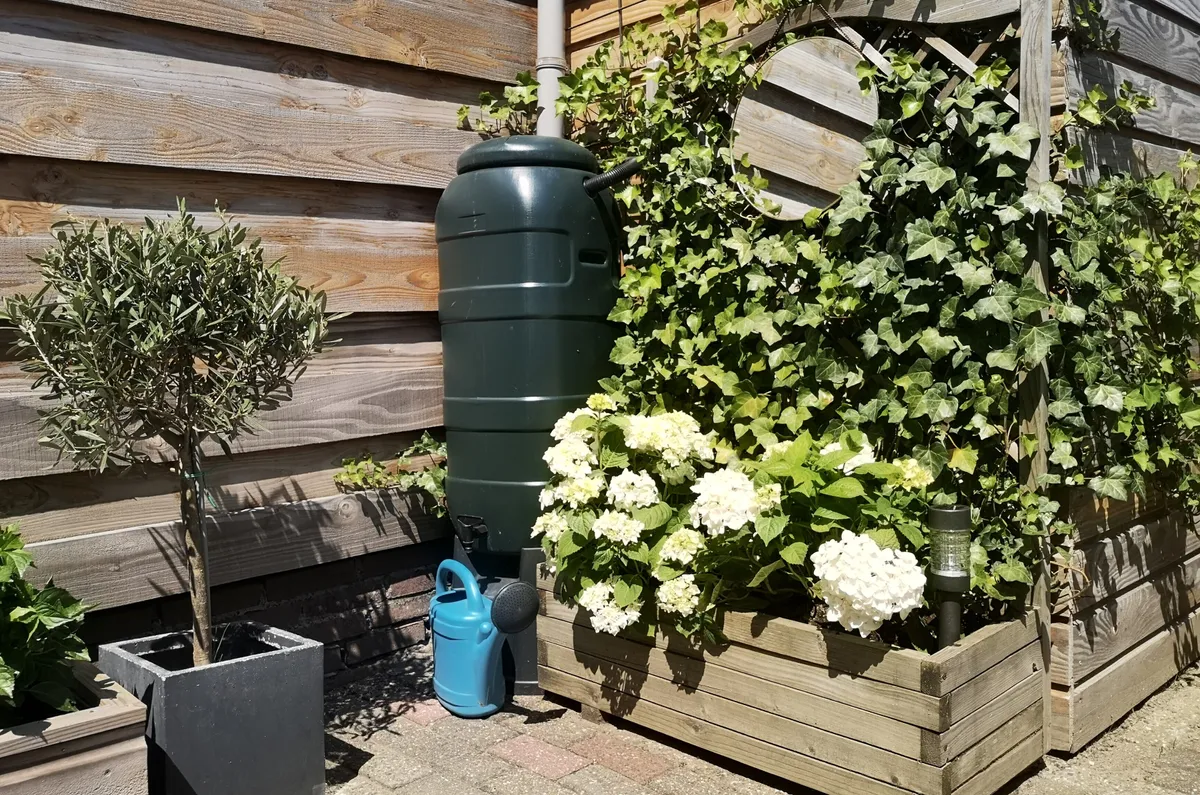
Rainwater harvesting is one of the best ways to reduce the amount of mains water used in your garden. The great news is, even in the smallest gardens, collecting and storing water is both relatively cheap and easy.
A water butt is a large-ish barrel, often plastic, used to collect and store rainwater. They are usually connected to the downpipe of a house roof guttering system, where water is diverted into the barrel. The stored water can then be easily accessed via a lid at the top or a tap at the bottom of the barrel. Butts range in price, but a standard 100ltr butt should cost no more than £50, and with a few basic DIY tools, they are easy to install.
Water butts can also be attached to the guttering on garages, garden sheds and greenhouses, meaning it’s possible to have numerous butts around your garden.
Try water diversion
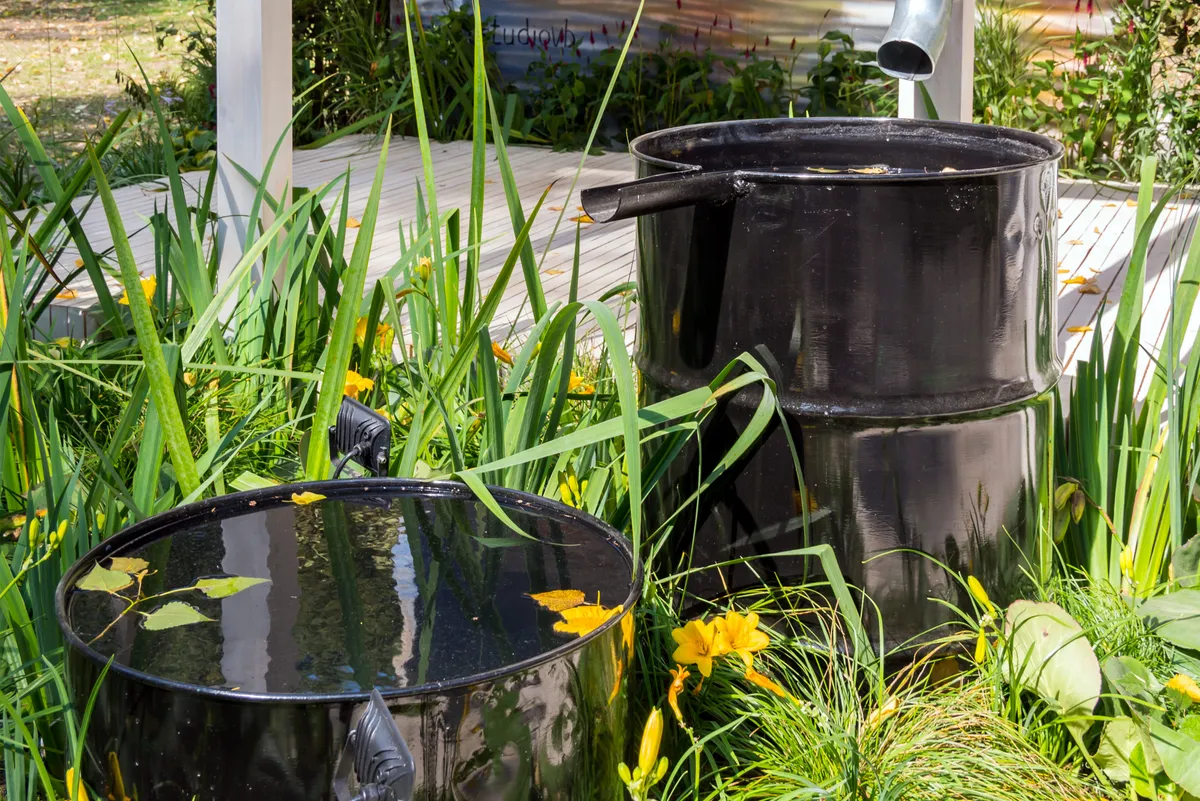
If you feel you’ve reached your limit with water butts, or you can’t afford them, guttering on sheds, greenhouses and garages can be used to divert water into plant pots, flower beds and ponds.
You could even go one step further and divert a pond overflow into a storage container or plant bed. Ultimately, the aim here is to hold as much water as possible in your garden before it enters the drain system.
How to reuse water in your garden
Use domestic wastewater
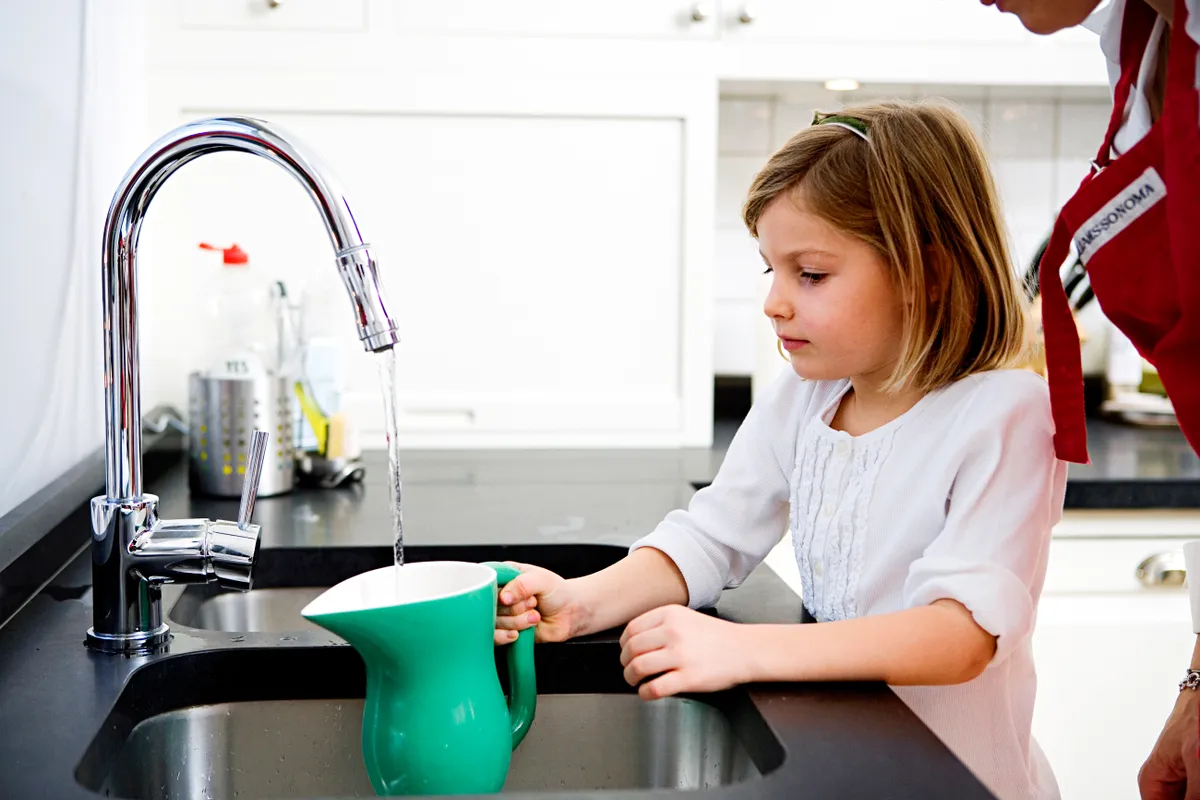
Many household soaps and detergents are harmless to plants, meaning 'grey water' from the kitchen, washing machine, bath, sink and shower can be used in the garden.
You do need to be conscious, however, of what else has entered the 'grey water', as bleaches, disinfectants, dishwasher salt, and stronger cleaning products can harm plants and damage soil. It’s best to avoid using grey water on produce that won’t be cooked, such as salads and tomatoes.
There are lots of other ways to reuse water from your house. As you’re waiting for the sink tap or shower to heat up, why not fill a bucket with the water that would otherwise disappear down the plughole and use it on the garden? You can also use the leftover water from your pasta or potatoes, once it has cooled down – in fact, it acts as a plant feed and so is actively good for them.
How to make your garden more drought-proof
Use drought-tolerant plants
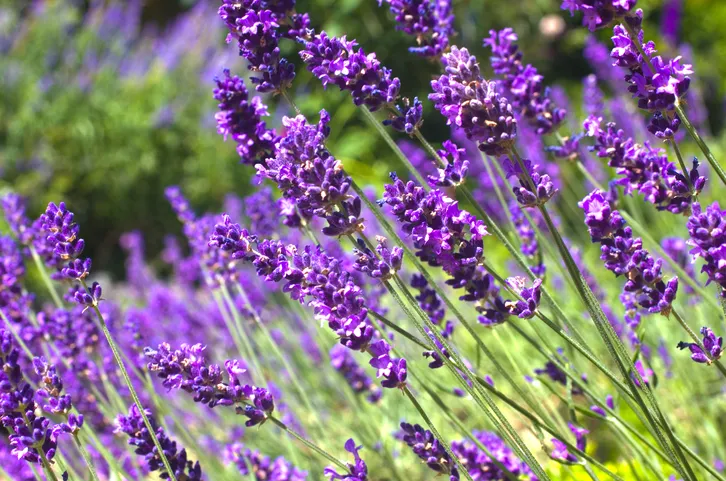
As our climate changes, it’s worth considering plants, shrubs and trees that are more suited to warmer conditions. Varieties that are drought-tolerant will be much better placed to survive through periods without rain when hosepipe bans are in place.
Some good examples of drought-tolerant plants that still offer something special to your garden are:
- Lavender
- Verbena
- Agapanthus
- Geums
- Hardy geraniums
- Stipa grasses
- Star jasmine
- Sedums
Mulch your garden
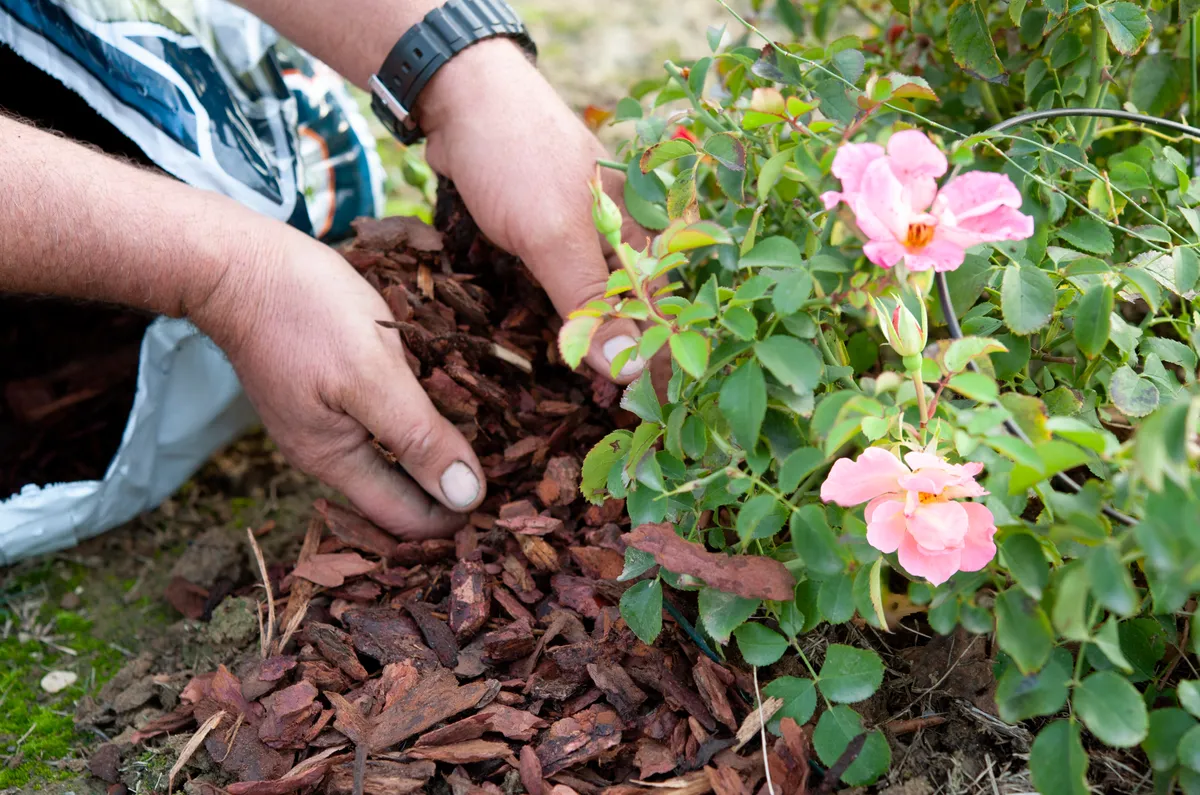
Adding organic matter either on top of the soil around your plants and shrubs, or digging it into the soil, does two things; firstly, it reduces evaporation levels, thus keeping the soil below moist and reducing the need to water; and secondly, it reduces weed growth, which would otherwise take nutrients and water from the rest of the garden.
Remove weeds
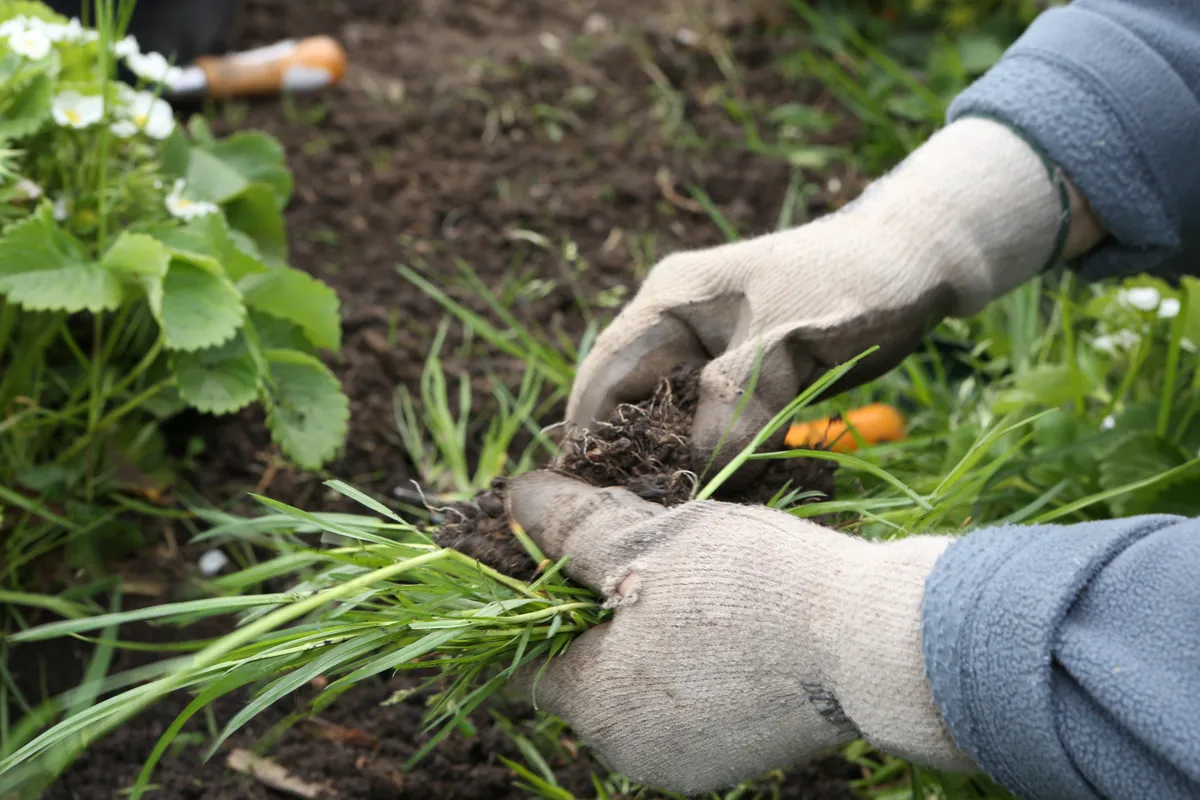
Weeds are essentially plants that you don't want in your garden. Weeds that grow around plants, shrubs and trees will be competing for water in the soil. By removing these weeds, you're increasing the amount of water in the soil for your desired plants. Even better is to mulch afterwards to help protect the water that enters the soil.
